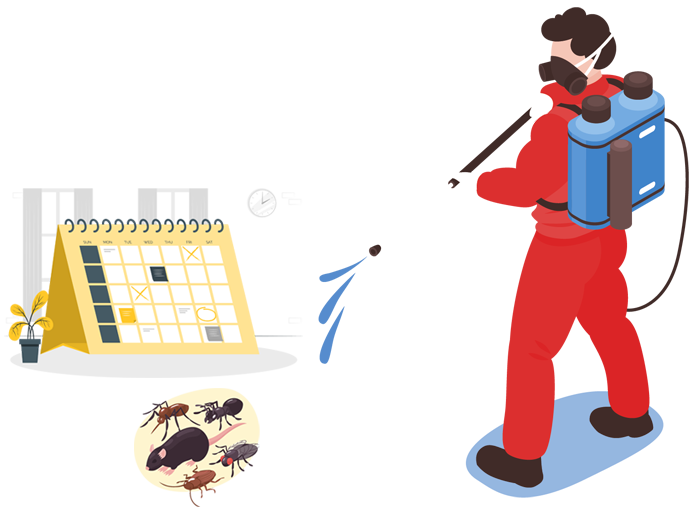The world of supply chain management has undergone a significant transformation in recent years. From streamlining processes to reducing costs, organizations have constantly strived to improve their operations. However, one aspect that often goes unnoticed is the impact of pest control on supply chains.
Pests are a major threat to the efficient functioning of supply chains. They can cause damage to goods, contaminate products, and even lead to financial losses for businesses. Therefore, it is crucial for organizations to invest in safe and effective pest control measures.
One major challenge faced by supply chain managers is finding ways to keep pests at bay while also ensuring the safety and integrity of products. Traditional pest control methods involve the use of harmful chemicals that not only pose a threat to human health but also leave behind toxic residues on products. This can be especially problematic for food and pharmaceutical industries where product safety is paramount.
Thankfully, advancements in technology have paved the way for safer pest control practices that do not compromise on product safety and quality. Integrated Pest Management (IPM), an approach that combines preventive measures with non-toxic solutions, has emerged as a game-changer in the industry.
Under IPM, trained professionals conduct regular inspections and https://www.mumspages.com.au/directory/category/home-services/pest-control-services/location/nsw/sydney-region/macarthur-and-camden/ identify potential entry points or breeding grounds for pests. They then implement preventive measures such as sealing gaps and cracks in buildings or implementing proper waste management practices. In case of an infestation, non-toxic methods such as baiting or trapping are preferred over chemical treatments.
Another emerging trend in safe pest control is the use of biological controls such as pheromone traps or beneficial insects like ladybugs which naturally prey on pests without posing any harm to humans or products. These innovative solutions not only eliminate the need for toxic chemicals but also result in long-lasting effects as they target pests at their source.
Apart from ensuring product safety and minimizing risks associated with traditional pest control methods, adopting safe pest control measures can also result in cost-savings for businesses. By reducing the frequency of pest infestations and eliminating the need for costly chemical treatments, organizations can save significant amounts of money in the long run.
Moreover, safe pest control practices also align with consumer demands for eco-friendly and sustainable operations. Customers today are more conscious about the impact of their purchasing decisions on the environment and actively seek out businesses that prioritize sustainability.
In a world where supply chain disruptions have become all too common, safe pest control measures can play a crucial role in keeping operations running smoothly. From food recalls to product contamination incidents, pests pose a serious threat to supply chains and can cause significant damage to an organization’s reputation and bottom line.
In conclusion, it is vital for businesses to prioritize safe pest control practices within their supply chains. Not only do these practices ensure product safety and minimize risks associated with traditional methods but also result in cost-savings and align with consumer demands for sustainable operations. With technological advancements constantly driving innovations in this field, it is high time for organizations to reassess their pest control strategies and make necessary improvements before it’s too late.

